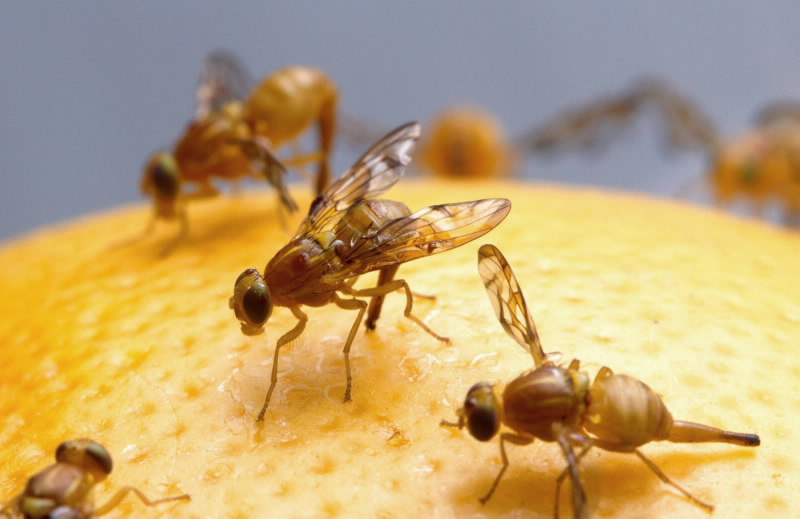Nuclear science is being used to wage a campaign to contain one of Australias most destructive horticultural pests, the Queensland fruit fly. Bactrocera tryoni causes considerable damage to the fruit and vegetable growing industries, as well as to home gardens, along Australias East Coast, far inland, and as far south as Adelaide.
 |
| Nuclear science is being used to wage a campaign to contain one of Australias most destructive horticultural pests, the Queensland fruit fly. Credit: Alex Auch |
It poses a real threat to Australias valuable domestic and export fruit markets. In an average year, the Commonwealth and State Governments spend in excess of $7 million on anti-fruit fly activities. Costs to commercial orchardists amount to about $18 million, while backyard growers suffer losses conservatively estimated at $100 million.
To help contain the problem, staff at ANSTO are using a Cobalt-60 gamma radiation source to irradiate fruit fly pupae in an effort to flood wild fruit fly populations with sterile males. The project is run by the Tri-state Fruit Fly Committee, and the procedure used is called SIT (Sterile Insect Technique).
The pupae are mass produced by NSW Agricultures Technical Manager, SIT Production Facility, Mary Ann Terras, then brought to ANSTO. ANSTO's GATRI facility is used to irradiate the pupae when they are exactly 8 days old. This process ensures sexual sterilisation, but not mutation.
On average, NSW Agriculture produces about 10 million Queensland fruit fly pupae per week for sterilisation and introduction into the citrus and stone fruit growing areas of three States: NSW, Victoria and South Australia. However, now, with the opening of a new fruit fly breeding facility at Camden, the number of pupae produced is expected to increase to about 25 million per week.
The irradiation service ANSTO provides to NSW Agriculture is unique in that no other Australian facility can administer such accurate low doses in the large quantities required for sterilisation of this horticultural pest.
Medical disposables, for example syringes and surgical gloves, are routinely irradiated to a dose of 25,000Gy (Gray-a unit of absorbed dose) of radiation.
Fruit fly pupae must receive a dose of between 70 and 75Gy to ensure they are sterile but still able to fly and mate. Death for humans would result from a dose of just 4-5Gy. The irradiated fruit fly do not become radioactive and pose no threat to people who may come into contact with them.
Each box of pupae irradiated in GATRI is carefully monitored for radiation dose administere by Radiation Technology staff, Gavin Gant and Connie Banos. In accordance with ISO 9000 Series Quality System Principles, the processing of goods by ANSTOs irradiation service requires the checking by an independent officer of each batch of pupae processed.
After confirmation of accurate processing, the pupae are despatched to the distribution site i plastic sleeves, then transferred to large plastic garbage bins , where they emerge.
Once the wings of the Queensland fruit fly have hardened enough for them to fly, about 48 hours after emerging, they are released at an already infested site and left to mate -fruitlessly.
To monitor progress of the SIT (Sterile Insect Technique) program, sterilised flies are coated with fluorescent dust. They are counted in relation to the number of wild flies caught with them in a grid trap in the infested area.
If successful, entomologists will trap a high proportion of sterilised flies to wild flies. This should result in a clear reduction in maggot infestations of fruit.
Irradiation of fruit fly pupae is the safest current alternative to using environmentally unfriendly pesticides. While the aim is to suppress Queensland fruit fly populations, it is not to eradicate them. By law, Australia must protect its native animals and insects. Containing the population to Queensland, its State of origin, is the only answer.
"Exporters have to be able to guarantee their fruit isnt infested with fruit flies," said Mary Ann Terras. "They could lose their export licences otherwise."
She said the laws are so strict, "One fly caught is an occurrence, two caught in two adjacent traps is an outbreak."
The Tri-state Fruit Fly Committee funds the SIT project and it is expected that arrangement will continue for at least another five years.


